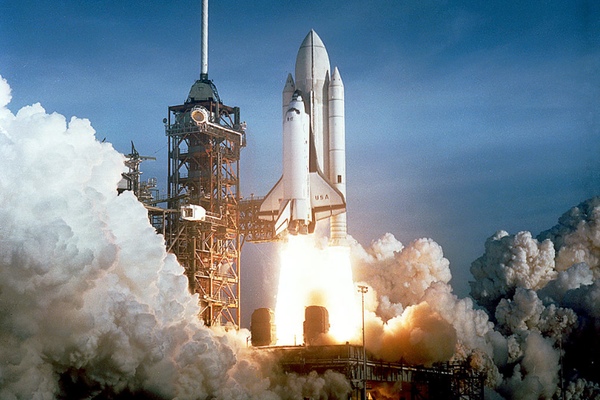The U.S. Must Take an Honest Look at the Costs of Spaceflight

The harsh criticism by the National Research Council of NASA's unfocused and underfinanced plans to send astronauts to Mars is not new ("Adrift: As NASA fixates on Mars, rivals shoot for the moon" - Page A1, Sunday). Since 1969, NASA has unsuccessfully struggled with three underlying problems. First, every president and Congress wants the glory of human spaceflight without being willing to pay the cost. No president has wanted, as Richard Nixon stated, to be known as the president who stopped sending American astronauts into space. When Apollo 11 landed on the moon on July 20, 1969, it conclusively ended the space race. This American victory also destroyed the political justification for spending $26 billion (over $100 billion today) to send men to the moon.
Second, beyond the 60,000 Americans and hundreds of thousands of Vietnamese and Iraqis killed in the Vietnam and Iraqi wars, is another, less visible casualty: NASA's ambitious plans for the human exploration of space. The political desire not to raise taxes to cover the rising cost of the Vietnam War meant NASA's budget peaked in 1966. Nearly three decades later, George W. Bush's invasion of Iraq deprived his 2004 Vision for Space Exploration of the money it needed to succeed.
Third, spaceflight is expensive. Just reaching orbit costs about $10,000 per pound (by comparison, when I fly from Bush Intercontinental Airport to another U.S. location, I pay about $2-4 per pound of me). Space itself is a harsh, unforgiving environment. It's not called rocket science (actually rocket engineering) for nothing. Sending astronauts into space is especially expensive: People demand life support and higher reliability systems.
When the Bush administration in 2004 decided to retire the shuttle in 2010, the decision was made on grounds of safety and to free money for its Vision for Space Exploration. Achieving the Vision's goals of sending astronauts back to the moon and on to Mars was predicated on not significantly increasing NASA's budget, a decision criticized - correctly - at the time as unrealistic. The Obama administration canceled the Vision in 2009 because it was significantly behind schedule and over budget, partly due to underfunding from the Bush administration, which - having decided not to increase taxes to pay for the Iraq War - tried to minimize federal spending elsewhere.
Under Obama, NASA has pushed commercialization of rockets to send cargo and astronauts to theInternational Space Station. Ironically, a president criticized as "socialist" has promoted opportunities for private enterprise against the opposition of some Republican lawmakers who normally claim to favor market over government enterprises. The budget battles, sequestration and government shutdown hit NASA especially hard.
The problems are not all political. Since 1981, NASA has spent over $21 billion on rocket programs that it canceled. The space agency, like the military, has been guilty of excessive optimism about costs and technology development. Apollo was the only human space program to come in on budget because NASA Administrator James Webb doubled the estimate from his engineers and then told the White House and Congress that if they were not willing to pay that amount, then don't start.
What can be done? First, Congress, the president and NASA need to be honest with each other and the American people about the cost of space exploration. If the country is not prepared to invest in human spaceflight, then perhaps it is better not to start at all. Underfunding projects usually results in higher total costs, delays and even cancellations, wasting the talents of skilled engineers, scientists and managers.
Second, to reduce the cost of reaching orbit, NASA should set and meet a goal of $100 per pound to orbit (and settle for $500) by 2025. If successful, this long-term research and development will radically change the economics of space exploration and exploitation. Because developing low-cost access to space will demand many years and billions of dollars, this is a legitimate and worthy goal for government, similar to the development of the interstate highway system. Indeed, the civilian rockets that launched satellites and astronauts since the 1960s owe their genesis to the $12 billion spent from 1945-57 (over $90 billion today) by the military developing rockets.
Third, Congress should fully fund the Commercial Crew Program so Boeing, SpaceX or Sierra Nevada can build a new generation of spaceships to carry astronauts into low-Earth orbit. Now, NASA pays Russia approximately $70 million to launch each American astronaut to the space station.
Finally, at the risk of sounding facetious, stay out of wars of choice. In addition to the loss of so many young men and women, the Vietnam and second Iraqi wars consumed trillions of dollars, sucking resources and opportunities away from our country. Perhaps a few more dollars to the State Department may do more for NASA than anyone realizes.